![]()
Well into my interview with Afia Nathaniel, the Dukhtar movie director puts me on the spot. I am meeting her at the May Fair Hotel in London, right before the European premiere of her first film. Until now, I have had the opportunity to get in a couple of good questions, but now she has taken over.
She is wearing what appears to be a red-coloured, gold-patterned cotton kurta and black specs. She starts asking me the questions now, which is my professional nightmare come alive. The filmmaker has become the journalist.
“How many films can you count on your fingers that have female leads, independent of the men? Tell me, right now. In Pakistan?”
I give this some serious thought and realise that it’s hard. I realise that I haven’t watched enough Pakistani films in my life. For some strange reason,
Shoaib Mansoor’s name is dancing around in my mind. Is it okay to say
Bol now? Should I say
Bol? Then I remember. Earlier this year, I had seen
Josh, a film by Iram Parveen Bilal, with
Aamina Sheikh in the lead. So I go for it.
“Two female leads?” counters Afia.
This feels like a rapid-fire round now. But I’m ready to brace the next level, because luckily I have also seen Sabiha Sumar’s latest,
Good Morning Karachi. There are several actresses in lead roles in that film. Female characters leading from the front, if you will. But, apparently, I haven’t understood the rules of the ‘Afia Nathaniel Quiz Show’.
“(Good Morning Karachi) has not been released theatrically in Pakistan.”
Now I give up. I guess
Dukhtar is a first. It’s the story of Allah Rakhi (
Samiya Mumtaz), a woman who flees with her young daughter Zainab (Saleha Aref), in order to avoid the girl having to marry an old tribal leader to settle a clan feud. Allah Rakhi doesn’t want her kid to have the same life as her, as she herself got married off to a man older to her when she was young. A hunt for the duo begins through the testing terrains of Pakistan’s mountainous areas and the film quickly goes from domestic social drama to thriller road movie in a matter of a few scenes.
Dukhtar is a wholly watchable film, with some decent performances by the older cast members and a truly marvellous one by the child actor Saleha Aref. Afia, who shows big promise with her debut, has chosen to tell the story in an unconventional way. This isn’t a dour, depressing tale about female oppression, but rather a film about female empowerment. Allah Rakhi and Zainab have to fend for themselves in this patriarchal society and these narrative cogs work tremendously well (granted, they are greatly aided by
Mohib Mirza as a Punjabi truck driver).
Our own
film critic, Rafay Mahmood, wasn’t too taken with the film. While he appreciated that ‘the director may have avoided making a Pukhtoon woman do an item number’, he found that ‘the substitute she offers is not engaging at all’. In fact, an item song, it seems, would have sped up the production of
Dukhtar. According to Afia, there simply wasn’t anyone willing to spend money on a script like this.
“In Pakistan, nobody wanted to finance a film with two women in the lead, by a female filmmaker. That was always a challenge. They felt threatened. They don’t understand if the film doesn’t have an item number or a song and dance routine. It was a bit of a departure. I feel that cinema is at a very exciting stage in Pakistan, even though there aren’t many risks being taken in the industry.”
Dukhtar is a risk which has paid off for Nathaniel. It’s this year’s
Academy Awards entry for Pakistan, the country’s second entry in many years. After last year’s unsuccessful Oscars bid for
Zinda Bhaag, this is an interesting choice by the section committee, given that it has had its world premiere at the Toronto Film Festival and its aesthetics cater to a global festival audience.
“What I think Dukhtar has done really different from other films is that we have broken the mould of where we can go with this film. It’s not just for Pakistan, this film has an international audience, which is why we’re so excited that we’re able to bring the dialogue out of Pakistan as well. And in a good way, you know?”
This is undoubtedly true. Films like these do stimulate debates amongst international audiences. Western viewers will always take an interest in topics like
child marriages or the treatment of women in an Islamic republic. And for some strange reason, the depiction of these themes constantly irks viewers in Pakistan. The truth is too bitter a pill for some, it seems. Personally, I feel this is just an outrage for the sake of outrage, being ‘offended’ because one thinks it’s the right thing to do. But
Dukhtar isn’t that kind of a film. It isn’t actively propagating a message or viewpoint.
“It’s a story. It’s the nature of the story. It’s a thriller. I mean, you have the good guys, the bad guys in any thriller. And what happens in a thriller? You fear for the good guy or the mission to fail. And that’s what it is. It’s only when you have women on the screen, you are judged by Pakistanis. You’re judged for having a female in the lead, with this issue behind. They immediately judge you as being feminist, which in Pakistan is a gaali. I mean, they don’t think about it in the sense that 50% of the population are women. It’s a right for us to have female protagonists on screen.”
And of course it is Nathaniel’s right as a filmmaker first, not as a woman, to tell the story she wants to tell. And in the way she wants to. Because only then can she achieve her real aim.
“The film is important in what it’s highlighting, not just for Pakistan but for many other countries as well. It’s topical, but I think at the same time it’s about breaking the silence and the status of a lot of things in our society and culture. I believe our film has done that, in a good way. In a society you always have the progressive side and the conservative side. And it’s important to have some kind of dialogue, even though their views may be polar opposite. But I think it’s important for any journey where change has to happen, it needs to have polar opposites on its side.”
Talking of journeys,
Dukhtar was never a smooth sailing one. As aforementioned, finance was always an issue. Of course, shooting in the middle of such difficult areas like Gilgit-Baltistan, in temperatures of -13°C, was another factor which spoke against the film. There was a lot of rescheduling and rewriting, the crew had to be very open for anything. Which speaks volumes for Nathaniel’s rigour and the precision with which she commanded this ship.
“People often ask me how difficult is it to be a woman in Pakistan and I say it’s not difficult in the sense of my work. Even though I work with 40 men as the only female crew member, I never had a problem with it. I had complete freedom to work as I chose to. It’s about having the right kind of skillset and the respect and then you go from there. Gender is not so much the issue. Gender becomes the issue when you bring it into the film. There’s a distinction. There’s a difference.”
I see Nathaniel’s point but she is privileged in that sense. There are undeniable problems for women in our society. On the day I met her,
Malala Yousafzai won the Nobel Peace Prize. It was a happy coincidence, because the film was having its European premiere on the day. And yet, the film, which has been in the making for so long, is still reflecting actual problems of society that will be present in five, 10, 20 years from now. From the looks of it. But in terms of filmmaking and cinema, Pakistan seems headed in the right direction. After a long, long time, there seems to be a sense of genuine productiveness. But mind you, Nathaniel is quick to remind us that there should be no false hopes. Pakistan is in need of this reality check and she provides it honestly.
“There’s no true revival. I will say that right now and on record. It’s only survival. There is no revival. Revival happens when you have a critical mass of content in the market. Just having one film every one year or two years is not exactly a revival.”
So, we’re still taking baby steps after all. But one can always dream.
Dukhtar could well go on to an Oscar nomination and then eventual glory. I certainly wish it all the best, although the film critic inside me hears a nagging voice that other entries are better. It’s up against titles like
Two Days, One Night (Belgium),
Leviathan (Russia),
Mommy (Canada),
Winter Sleep (Turkey) or
Ida (Poland). And only five make the cut.
But films shouldn’t be measured by their Oscar success. Nathaniel is already in pre-production of her ambitious next project.
“It’s a science fiction thriller. I love sci-fi. My all-time favourite is 2001: A Space Odyssey. Kubrick, he’s my favourite filmmaker of all time.”
I smile when I hear this. A Pakistani science-fiction thriller sounds intriguing and with Nathaniel in charge, it might just work. The Pakistani film industry needs her desperately, if not for a revival, then certainly for a re-invention. I hope she finds the necessary funds for her next project, which can’t possibly be a low priced affair. And if no-one is willing to finance it, Nathaniel can always include an incidental item song in space.







 And here’s me at a PTI fundraiser in Karachi.
And here’s me at a PTI fundraiser in Karachi.
 Read more by Junaid
Read more by Junaid 
 Veena Malik has always gone out of her way to create a spectacle out of everything she has put herself into. Photo: File[/caption]
So, this new video just seems like another theatrical attempt to add some spice to her life (and to that of others too).
I am not to trying to compare her actions to those of a regular woman (since she has clearly shown that she isn’t one) but she needs to understand that there are several ways to resolve issues. And not all of them have to be so dramatic.
Take the example of Sunny Leone. When the Indo-Canadian moved from the adult film industry to Bollywood, she spoke about her past in a
Veena Malik has always gone out of her way to create a spectacle out of everything she has put herself into. Photo: File[/caption]
So, this new video just seems like another theatrical attempt to add some spice to her life (and to that of others too).
I am not to trying to compare her actions to those of a regular woman (since she has clearly shown that she isn’t one) but she needs to understand that there are several ways to resolve issues. And not all of them have to be so dramatic.
Take the example of Sunny Leone. When the Indo-Canadian moved from the adult film industry to Bollywood, she spoke about her past in a  She has announced her retirement from the film industry and has claimed that she will only work for social welfare projects. Photo: File[/caption]
Her supporters will argue that it is customary to ask for prayers and forgiveness when
She has announced her retirement from the film industry and has claimed that she will only work for social welfare projects. Photo: File[/caption]
Her supporters will argue that it is customary to ask for prayers and forgiveness when 


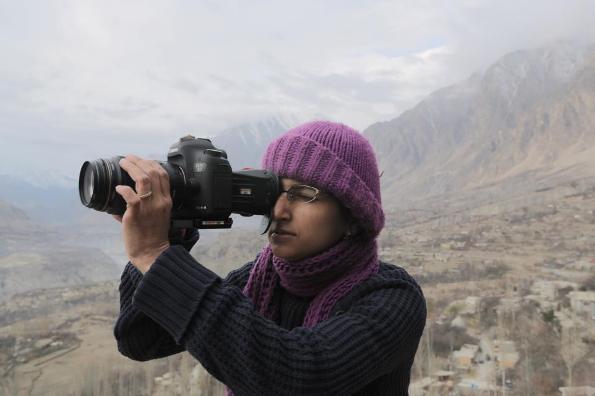 Photo: Dukhtar Facebook page[/caption]
The movie’s premise revolves around
Photo: Dukhtar Facebook page[/caption]
The movie’s premise revolves around  Photo: Dukhtar Facebook page[/caption]
The mere thought of her daughter’s
Photo: Dukhtar Facebook page[/caption]
The mere thought of her daughter’s 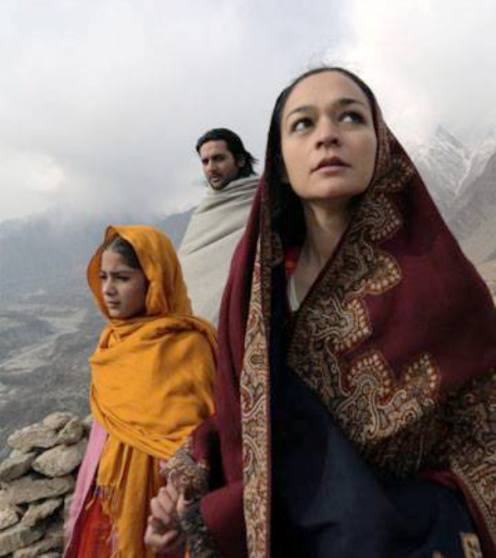 Photo: Dukhtar Facebook page[/caption]
Rakhi’s actions and the movie itself will make the audience question the logic behind this antediluvian custom. This archaic tribal
Photo: Dukhtar Facebook page[/caption]
Rakhi’s actions and the movie itself will make the audience question the logic behind this antediluvian custom. This archaic tribal 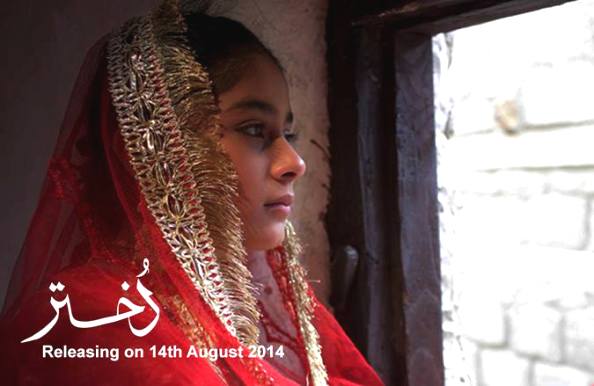 Photo: Dukhtar Facebook page[/caption]
The dialogue delivery of the cast members, especially Mumtaz, is unwavering and strong. Mirza also exhibits a strong portrayal of the character that he plays. The child actor, Saleha, is surprisingly good as well. They are augmented by a strong cast of seasoned actors such as Asif Khan, Ajab Gul, Adnan Shah (Tipu), Abdullah Jan, Samina Ahmed, Zeeshan Shafa and Omair Rana.
[caption id="" align="alignnone" width="595"]
Photo: Dukhtar Facebook page[/caption]
The dialogue delivery of the cast members, especially Mumtaz, is unwavering and strong. Mirza also exhibits a strong portrayal of the character that he plays. The child actor, Saleha, is surprisingly good as well. They are augmented by a strong cast of seasoned actors such as Asif Khan, Ajab Gul, Adnan Shah (Tipu), Abdullah Jan, Samina Ahmed, Zeeshan Shafa and Omair Rana.
[caption id="" align="alignnone" width="595"] Photo: Dukhtar Facebook page[/caption]
In terms of the visual elements, Dukhtar in a nutshell is breath-taking to look at. Set against the backdrop of gorgeous and surreal locations of Gilgit, Hunza Valley, Skardu and Kallar Valley, it will be, aesthetically speaking, a visual feast for moviegoers. The director does well to differentiate and saturate the visual tones between showing the beautiful, albeit rugged, terrain of northern Pakistan and the monotonous urban concrete jungle that is Lahore.
[caption id="" align="alignnone" width="595"]
Photo: Dukhtar Facebook page[/caption]
In terms of the visual elements, Dukhtar in a nutshell is breath-taking to look at. Set against the backdrop of gorgeous and surreal locations of Gilgit, Hunza Valley, Skardu and Kallar Valley, it will be, aesthetically speaking, a visual feast for moviegoers. The director does well to differentiate and saturate the visual tones between showing the beautiful, albeit rugged, terrain of northern Pakistan and the monotonous urban concrete jungle that is Lahore.
[caption id="" align="alignnone" width="595"]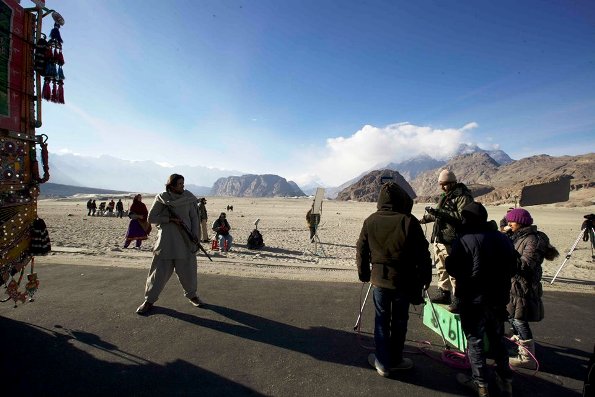 Photo: Dukhtar Facebook page[/caption]
In terms of the auditory elements, the music and soundtracks composed for this movie are powerful and complement the storyline very well. Cases in point are,
Photo: Dukhtar Facebook page[/caption]
In terms of the auditory elements, the music and soundtracks composed for this movie are powerful and complement the storyline very well. Cases in point are, 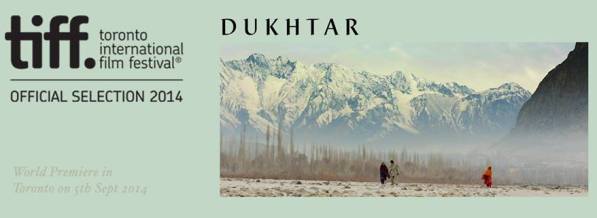 Photo: Dukhtar Facebook page[/caption]
Dukhtar opened nationwide in all major cinemas across Pakistan on September 18, 2014, and I would highly recommend people to watch it.
Photo: Dukhtar Facebook page[/caption]
Dukhtar opened nationwide in all major cinemas across Pakistan on September 18, 2014, and I would highly recommend people to watch it.
 Photo: Na Maloom Afraad Facebook page[/caption]
Speaking about the premise of the movie, it swivels around the three main protagonists: Shakeel Bhai (
Photo: Na Maloom Afraad Facebook page[/caption]
Speaking about the premise of the movie, it swivels around the three main protagonists: Shakeel Bhai (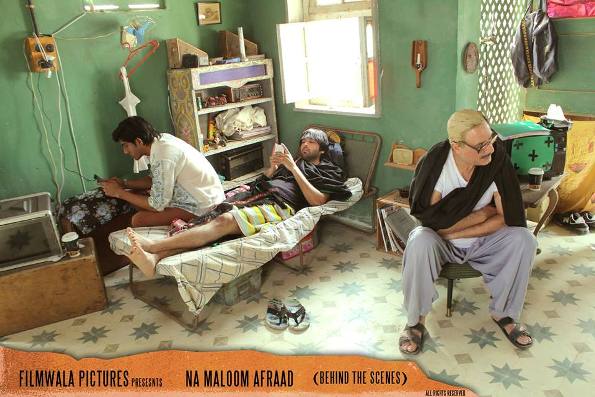 Photo: Na Maloom Afraad Facebook page[/caption]
In the acting department, all actors demonstrate their acting prowess sufficiently, especially Fahad and Mohsin. Fahad has transitioned seamlessly from the smaller screen of the drama industry towards the bigger celluloid screen of the cinema format.
Javed is, as usual, on point and
Photo: Na Maloom Afraad Facebook page[/caption]
In the acting department, all actors demonstrate their acting prowess sufficiently, especially Fahad and Mohsin. Fahad has transitioned seamlessly from the smaller screen of the drama industry towards the bigger celluloid screen of the cinema format.
Javed is, as usual, on point and 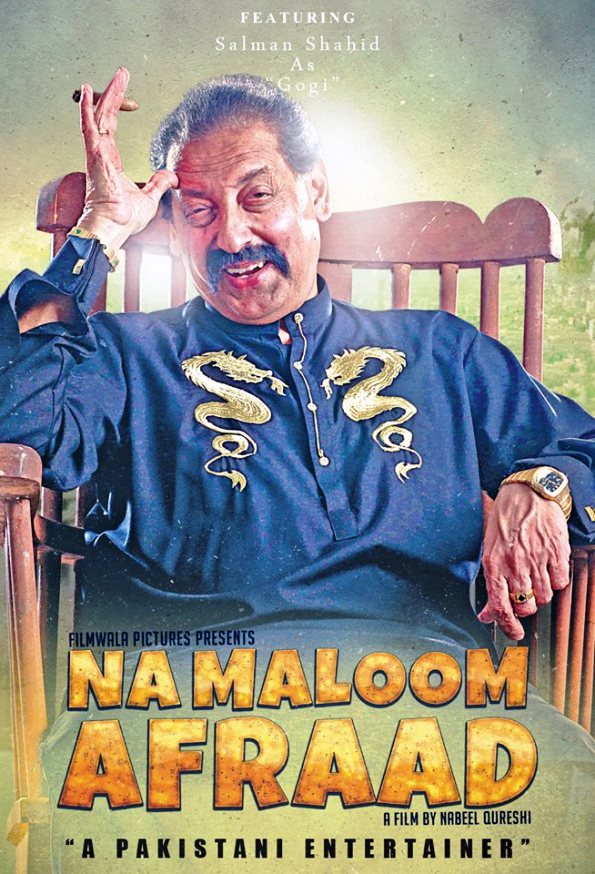 Photo: Na Maloom Afraad Facebook Page[/caption]
Ultimately, it is the trifecta (Javed, Fahad and Mohsin) that carries the movie competently on their shoulders because their chemistry is just amazing and they click and gel in with each other like three peas in a pod. Other cast members include Paras Masroor, Kubra Khan, Ali Rizvi and Nayyar Ejaz; they all hold their own in the limited on-screen time that they are given.
[caption id="" align="alignnone" width="536"]
Photo: Na Maloom Afraad Facebook Page[/caption]
Ultimately, it is the trifecta (Javed, Fahad and Mohsin) that carries the movie competently on their shoulders because their chemistry is just amazing and they click and gel in with each other like three peas in a pod. Other cast members include Paras Masroor, Kubra Khan, Ali Rizvi and Nayyar Ejaz; they all hold their own in the limited on-screen time that they are given.
[caption id="" align="alignnone" width="536"] Photo: Na Maloom Afraad Facebook page[/caption]
The director has intentionally opted to choose regular local Karachi landmarks and locations for shooting the bulk of the movie, instead of international exotic locales. Same is the case with shooting the songs of the movie. The subject of the story is such that showing outdoor and extravagant foreign location in large proportions will seem out of place and incompatible with the on-going theme of the movie. In particular, it will resonate well with
Photo: Na Maloom Afraad Facebook page[/caption]
The director has intentionally opted to choose regular local Karachi landmarks and locations for shooting the bulk of the movie, instead of international exotic locales. Same is the case with shooting the songs of the movie. The subject of the story is such that showing outdoor and extravagant foreign location in large proportions will seem out of place and incompatible with the on-going theme of the movie. In particular, it will resonate well with  Photo: Na Maloom Afraad Facebook page[/caption]
In terms of the musical score of the movie, it will rival any Bollywood flick, as all the songs are catchy and melodious, especially the item song Billi in which Mehwish Hayat exhibits her dancing talent. She is simply scintillating, drop dead gorgeous and spectacular. Finally Pakistanis have an item song they can call their own, without going into the merits or the demerits of the culture of embedding an item song in a movie; it is a reality whether one likes it or not.
Instead of playing the usual
Photo: Na Maloom Afraad Facebook page[/caption]
In terms of the musical score of the movie, it will rival any Bollywood flick, as all the songs are catchy and melodious, especially the item song Billi in which Mehwish Hayat exhibits her dancing talent. She is simply scintillating, drop dead gorgeous and spectacular. Finally Pakistanis have an item song they can call their own, without going into the merits or the demerits of the culture of embedding an item song in a movie; it is a reality whether one likes it or not.
Instead of playing the usual  Photo: Na Maloom Afraad Facebook page[/caption]
It would be almost criminal (pun intended) to miss this one out.
Photo: Na Maloom Afraad Facebook page[/caption]
It would be almost criminal (pun intended) to miss this one out. 
 Photo: Screenshot[/caption]
3 Bahadur is a 3D
Photo: Screenshot[/caption]
3 Bahadur is a 3D  Photo: Screenshot[/caption]
Having attended the launch event of the movie and I was lucky enough to hear Chinoy share her thoughts on the project. A very gleeful Chinoy, the proud CEO of
Photo: Screenshot[/caption]
Having attended the launch event of the movie and I was lucky enough to hear Chinoy share her thoughts on the project. A very gleeful Chinoy, the proud CEO of  Photo: Screenshot[/caption]
To say the very least, it is heart-warming and exciting to see the
Photo: Screenshot[/caption]
To say the very least, it is heart-warming and exciting to see the 
